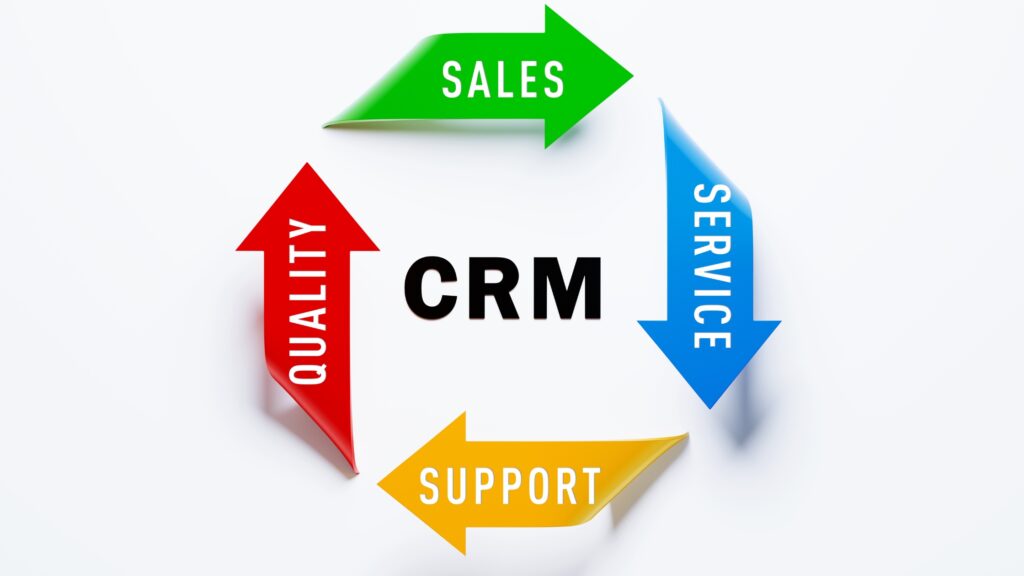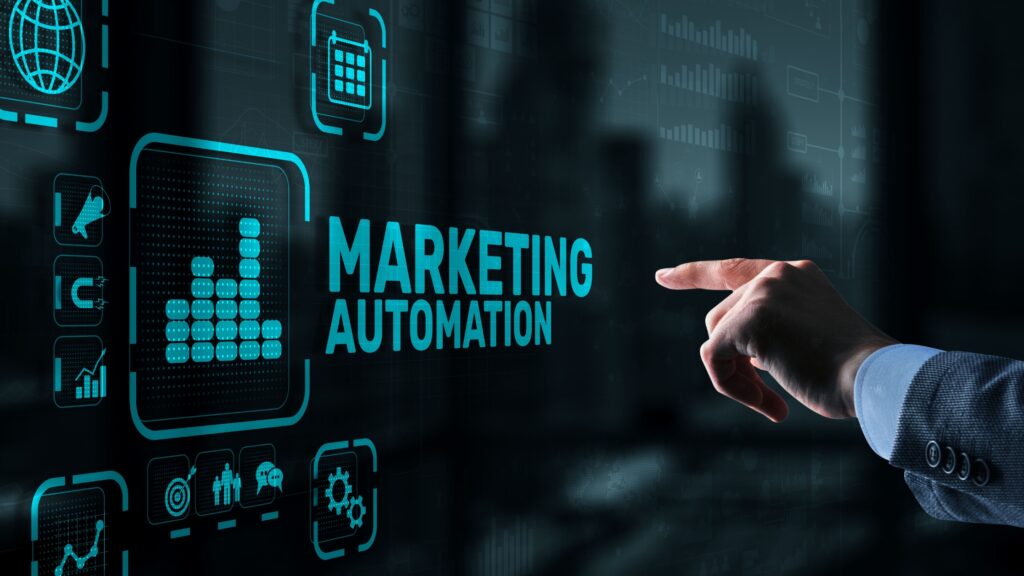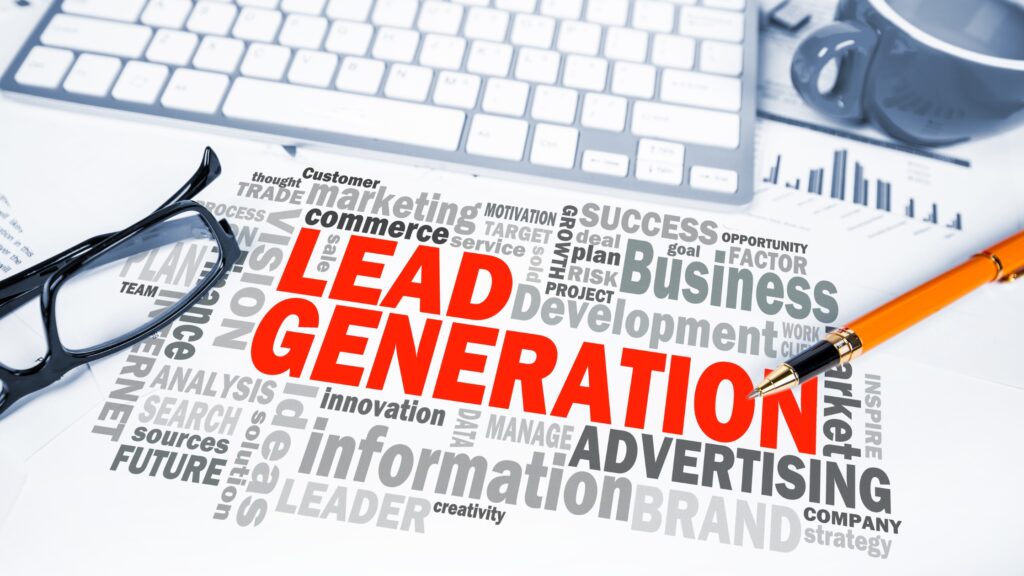Introduction:
In the dynamic realm of digital marketing, mastering the art of lead generation is paramount. A well-structured marketing funnel acts as the guiding force, steering potential customers seamlessly from awareness to conversion. In this comprehensive guide, we unveil the secrets to achieving lead generation success through the strategic mastery of the marketing funnel.
Understanding the Digital Marketing Funnel
The Awareness Stage
The Awareness Stage in the digital marketing funnel is the initial phase where the primary goal is to capture the attention of potential customers within the vast and competitive online environment. This stage is crucial as it marks the first interaction between your brand and the audience.
Key concepts of the Awareness Stage
Capturing Attention:
This refers to the process of grabbing the interest and focus of individuals who may not yet be familiar with your brand or products. In a crowded digital landscape, where consumers are constantly bombarded with information, standing out is essential
Crowded Digital Landscape:
Describes the highly competitive and saturated nature of the online space. With countless brands vying for consumer attention, breaking through the noise becomes a significant challenge.
Innovative Strategies:
Implies the need for creative and unique approaches to marketing. Traditional methods may not be sufficient, so businesses must explore new and inventive ways to make their brand noticeable.
Make Your Brand Stand Out:
Emphasizes the importance of differentiation. Your brand needs to distinguish itself from competitors, making it memorable and compelling to your target audience.
Build a Robust Online Presence:
Highlights the necessity of establishing a strong and comprehensive digital footprint. This includes having an active presence on various online platforms, such as social media, websites, and other relevant channels.
Resonate with Your Target Audience:
Underlines the significance of connecting with the specific demographic or customer segment you intend to reach. Your messaging, branding, and content should align with the interests and preferences of your target audience.
In summary, the Awareness Stage is about creating a strong and positive initial impression. By employing innovative and attention-grabbing strategies, businesses can make their brand stand out in the digital crowd, building a robust online presence that resonates with the identified target audience.
The Interest Stage
This is second phase in the digital marketing funnel, where the primary focus is on engaging and capturing the interest of potential customers who have become aware of your brand.

Key elements in the Interest Stage
Engagement is the Key:
Emphasizes that, at this stage, the primary objective is to actively involve potential customers with your brand. Engagement can take various forms, such as interactions on social media, clicks on content, or participation in surveys.
Creating Content:
Highlights the importance of developing content that not only grabs attention but also sustains interest. The content should be relevant, valuable, and align with the needs or preferences of your target audience.
Captivates and Fosters Interest:
Stresses the need for content that goes beyond being eye-catching and actually encourages a deeper level of interest. This involves providing information, solving problems, or offering entertainment that resonates with the audience.
Leverage the Power of Social Media:
Recognizes the influential role of social media platforms in modern digital marketing. Businesses are encouraged to use these platforms strategically to connect with their audience, share compelling content, and foster a sense of community around the brand.C

Create a Compelling Narrative:
Encourages businesses to tell a story about their brand. This narrative should be engaging and resonate with the values and aspirations of the target audience. A compelling story helps to create a more memorable and meaningful connection.
Keep Potential Leads Hooked:
Highlights the importance of maintaining continuous interest. The goal is not just to capture attention momentarily but to keep potential leads invested in your brand. This involves consistently delivering valuable content and maintaining an active and engaging online presence.
In summary, the Interest Stage is all about deepening the connection with potential customers. By creating content that captivates and fosters interest, and by leveraging the power of social media to tell a compelling narrative, businesses can keep their audience engaged and move them further along the marketing funnel.
The Consideration Stage
The Consideration Stage is a critical phase in the digital marketing funnel where potential customers, having shown interest in your brand, are now evaluating whether your products or services meet their specific needs.
Key components in the Consideration Stag
Transitioning from Interest to Intent:
This signifies the shift in the mindset of potential customers from merely being interested in your brand to actively considering and intending to make a purchase decision. It’s a crucial step in the decision-making process.
Focus on Personalized Communication:
Emphasizes the need to tailor your communication to the individual preferences, behaviors, and needs of your potential customers. Personalized communication fosters a stronger connection and enhances the likelihood of converting interest into intent.
Uncover the Secrets of Effective Email Marketing:
Recognizes email marketing as a powerful tool during the consideration phase. Effective email campaigns can provide personalized content, exclusive offers, and product information, helping potential customers make informed decisions.
Delivering Valuable, Educational Content:
Highlights the importance of offering content that goes beyond basic information. Educational content helps potential customers understand the value of your products or services, addressing their specific pain points and concerns.
Position Your Brand as a Trusted Authority:
Building trust is crucial during the consideration stage. By consistently delivering valuable and reliable information, your brand can establish itself as an authority in the industry. This trust is instrumental in influencing purchasing decisions.
In summary, the Consideration Stage is about guiding potential customers through the decision-making process. To successfully transition from interest to intent, businesses should focus on personalized communication, leverage effective email marketing strategies, and deliver valuable, educational content that positions their brand as a trusted and authoritative source. This approach increases the likelihood that potential customers will choose your products or services when they are ready to make a decision.
The Intent Stage
Its a critical juncture in the digital marketing funnel where potential customers have moved beyond considering options and are showing a clear intention to make a purchase.
Key components in the Intent Stage outline
With Intent Established:
This indicates that potential customers have progressed from the consideration stage with a clear intention to take a specific action, such as making a purchase or engaging with your products or services.
Delve into Targeted Advertising:
At this stage, businesses should focus on targeted advertising efforts. This involves creating and deploying ads that specifically address the needs, preferences, and behaviors of the audience that has expressed intent. Targeted advertising maximizes the chances of capturing their attention effectively.
Retargeting Strategies:
Retargeting is a technique where ads are displayed to users who have previously interacted with your brand but have not completed the desired action (like making a purchase). Retargeting strategies aim to re-engage these potential customers and guide them back into the conversion funnel.
Understand the Nuances of Guiding Your Audience
Recognizes that guiding potential customers toward a decision involves a nuanced approach. This may include understanding their pain points, preferences, and objections, and tailoring marketing messages accordingly.

Making Them More Likely to Convert
The ultimate goal in the Intent Stage is to increase the likelihood of conversion. Businesses should optimize their strategies to align with the audience’s intent, providing the necessary information and incentives to encourage them to take the desired action
In summary, the Intent Stage is about capitalizing on the clear intention expressed by potential customers and guiding them toward conversion. This involves deploying targeted advertising, implementing retargeting strategies, and understanding the nuances of their decision-making process. The focus is on creating an environment that makes potential customers more likely to convert, ultimately leading to the fulfillment of their expressed intent.
The Purchase Stage
The Purchase Stage is the penultimate step in the digital marketing funnel where potential customers have expressed a clear intent to make a purchase.
Key components in the Purchase Stag
Optimizing Conversion Points:
At this stage, businesses focus on refining and enhancing the various touch points and interactions that lead to a conversion. This includes the website checkout process, forms, or any other steps that potential customers take before making a purchase.
Crafting Irresistible Calls-to-Action (CTA):
Calls-to-action are prompts that encourage users to take a specific action, such as making a purchase. Crafting irresistible CTAs involves creating compelling and persuasive messages that prompt potential customers to complete the desired action.
Crucial Stage:
Emphasizes the importance of the Purchase Stage in the overall customer journey. This is the point where potential customers transition into actual customers, making it a critical phase for businesses.
Learn How to Seal the Deal:
Indicates the need for businesses to understand the factors that can influence potential customers to finalize their purchase. This may involve addressing any remaining concerns, providing additional information, or offering incentives.
Turn Leads into Customers Effectively:
The primary goal of this stage is to convert leads into paying customers. Businesses need to implement strategies that effectively close the deal and facilitate a smooth transition from the consideration and intent stages to the final conversion.
In summary, the Purchase Stage is the culmination of the customer’s journey through the marketing funnel. Businesses optimize conversion points, create compelling calls-to-action, and focus on the final steps that turn potential customers into actual customers. Effectively sealing the deal in this stage is crucial for achieving the ultimate goal of converting leads into satisfied customers.
The Post-Purchase Stage
The Post-Purchase Stage is the final phase in the digital marketing funnel, occurring after a customer has made a purchase. This stage focuses on strategies to ensure customer satisfaction, encourage loyalty, and generate positive word-of-mouth.
Key components in the Post-Purchase Stage
The Journey Doesn’t End at Conversion:
Highlights that the customer journey extends beyond the point of purchase. Successful businesses recognize the value of ongoing engagement and satisfaction to foster long-term relationships.
Explore Strategies for Customer Retention:
Customer retention involves keeping existing customers engaged and satisfied, encouraging them to continue doing business with your brand. Strategies may include loyalty programs, personalized communication, or exclusive offers for repeat customers.
Encouraging Referrals:
Satisfied customers can become brand advocates. Encouraging referrals involves creating mechanisms for customers to recommend your products or services to friends, family, or colleagues. This word-of-mouth marketing can be a powerful driver of new business.
Fostering Positive Reviews:
Positive reviews are essential for building trust and credibility. Encourage customers to share their positive experiences through reviews on platforms such as websites, social media, or review sites. Positive reviews contribute to a positive brand image and attract new customers
Create a Continuous Loop of Satisfied Customers:
This emphasizes the cyclical nature of customer satisfaction and loyalty. Satisfied customers who are retained, refer others, and leave positive reviews contribute to a continuous loop of customer satisfaction, which, in turn, attracts more customers.
In summary, the Post-Purchase Stage is about extending the customer relationship beyond the point of sale. Businesses explore strategies for customer retention, encourage referrals, and foster positive reviews to create a virtuous cycle of satisfied customers. This continuous loop not only contributes to ongoing business success but also strengthens the brand’s reputation and customer loyalty over time.
Tools and Technologies for Funnel Optimization
CRM Systems:
In the world of digital marketing, Customer Relationship Management (CRM) systems play a pivotal role in optimizing the marketing funnel. Selecting the right CRM system is crucial for businesses looking to streamline their processes, enhance lead nurturing, and facilitate effective communication.

Why CRM Systems Matter:
A CRM system serves as a centralized platform that allows businesses to manage and analyze customer interactions throughout the entire customer lifecycle. It is a comprehensive tool that helps in organizing, automating, and synchronizing various aspects of customer relationships.
Selecting the Right CRM System:
Choosing the most suitable CRM system for your business is a critical decision. Factors such as the size of your organization, specific needs, and integration capabilities should be considered. Explore different CRM options to find one that aligns with your objectives and provides the necessary features for funnel optimization.
Leveraging CRM Data for Enhanced Lead Nurturing:
CRM systems house a wealth of customer data, including contact information, purchase history, and engagement patterns. By leveraging this data, businesses can personalize their interactions with leads, sending targeted and relevant content. Understanding customer behavior allows for more effective lead nurturing, guiding prospects through the marketing funnel with tailored communication.
Streamlining Communication:
Effective communication is at the core of successful funnel optimization. CRM systems streamline communication by providing a centralized hub for customer information. This ensures that marketing, sales, and customer service teams have access to the latest data, enabling them to deliver cohesive and consistent messages. Automated communication workflows within CRM systems further enhance efficiency, allowing teams to focus on building relationships rather than manual data management.
Marketing Automation: Unleashing Efficiency in Lead Nurturing
In the ever-evolving landscape of digital marketing, staying ahead requires strategic use of cutting-edge tools. Marketing automation stands out as a game-changer, offering businesses the ability to streamline processes and enhance efficiency, particularly in the crucial aspect of lead nurturing.
Understanding Marketing Automation
Marketing automation involves the use of software platforms to automate repetitive marketing tasks and workflows. This ranges from email campaigns and social media posts to personalized content delivery. The primary goal is to optimize time-consuming processes, allowing marketing teams to focus on creativity and strategy.

Benefits of Marketing Automation
Time Efficiency:
One of the core benefits is the significant time savings. Automated processes eliminate the need for manual execution of repetitive tasks, enabling marketing teams to allocate their time to more strategic activities.
Consistent Communication:
Marketing automation ensures consistent and timely communication with leads. Automated workflows can deliver targeted messages based on predefined triggers, ensuring that leads receive relevant information at every stage of the customer journey.
Personalization at Scale:
Automation tools empower businesses to personalize their interactions with leads on a large scale. By segmenting audiences and tailoring content based on preferences and behaviors, marketers can create a more personalized and engaging experience for each lead.
Lead Nurturing Efficiency
In the context of lead nurturing, marketing automation plays a crucial role. Automated workflows guide leads through the funnel systematically, delivering the right content at the right time. This increases the efficiency of the lead nurturing process, ensuring that leads are nurtured consistently and effectively.
Setting Up Automated Workflows
Define Objectives:
Clearly outline the goals and objectives of your lead nurturing process. Whether it’s educating leads, encouraging trial sign-ups, or promoting a specific product, having a clear vision guides the creation of effective workflows.
Segmentation and Targeting:
Segment your leads based on criteria such as demographics, behavior, or engagement level. This allows you to tailor automated workflows for different segments, increasing the relevance of your communications.
Content Mapping:
Map out the content that aligns with each stage of the customer journey. From awareness to conversion, ensure that your automated workflows deliver valuable and cohesive content that guides leads toward conversion.
Monitoring and Optimization:
Regularly monitor the performance of your automated workflows. Analyze key metrics such as open rates, click-through rates, and conversion rates. Use insights to optimize workflows for continuous improvement.
Analytics and Reporting: Unlocking Insights for Effective Lead Generation
In the data-driven landscape of digital marketing, the ability to gather and interpret analytics is instrumental for optimizing lead generation efforts. Analytics and reporting provide businesses with valuable insights into the performance of their marketing strategies, allowing for informed decision-making and continuous improvement.

Understanding Analytics:
Analytics involve the collection and analysis of data to gain insights into user behavior, engagement, and overall performance. In the context of lead generation, analytics help businesses understand how leads interact with their content, website, and campaigns at different stages of the marketing funnel.
Key Metrics to Track at Each Funnel Stage
Awareness Stage:
Monitor metrics such as website traffic, impressions, and social media engagement. These metrics provide an indication of how effectively your brand is capturing attention and building awareness within the target audience.
Interest Stage:
Track engagement metrics, click-through rates, and content consumption patterns. Understanding how leads interact with your content helps assess the level of interest and relevance of your offerings.
Consideration Stage:
Focus on metrics related to email click-through rates, form submissions, and webinar registrations. These metrics indicate the level of consideration and intent among leads as they move through the decision-making process.
Intent Stage:
Analyze conversion metrics such as lead form completions, demo requests, or trial sign-ups. These metrics provide insights into how well your marketing efforts are translating into actionable intent and potential sales opportunities.
Purchase Stage:
Track metrics related to conversion rates, sales, and customer acquisition costs. These metrics offer a clear picture of the effectiveness of your lead generation strategies in converting leads into customers.
Adapting Strategies Based on Analytics
Identify High-Performing Channels:
Analyze which marketing channels and platforms are driving the most qualified leads. Allocate resources and budget to channels that consistently yield positive results.
Optimize Content and Messaging:
Use analytics to understand which types of content resonate most with your audience. Optimize your content and messaging based on what drives engagement and conversions.
Refine Targeting and Segmentation:
Leverage analytics to refine audience targeting and segmentation. Identify characteristics of high-converting leads and adjust your targeting criteria to focus on similar demographics or behaviors.
Continuous A/B Testing:
Implement A/B testing for various elements of your campaigns, such as ad creative, email subject lines, or landing page designs. Analytics from A/B tests provide valuable insights for refining strategies and maximizing performance.
Data-Driven Decision-Making:
Emphasize a data-driven approach to decision-making. Base marketing strategies on concrete analytics rather than assumptions, ensuring that adjustments are informed by real-time performance data.
Real-Life Examples and Case Studies:
Embark on a journey through success stories of brands that have mastered the funnel. Learn valuable lessons from failures and adjustments, providing a real-world perspective on effective lead generation strategies.
Tips and Best Practices:
Explore A/B testing for continuous improvement, implement personalization strategies for an enhanced user experience, and stay abreast of industry trends to keep your funnel optimization strategies relevant and effective.
Common Challenges and How to Overcome Them:
Identify and address bottlenecks, tackle lead quality issues, and adapt to changes in consumer behavior. This section equips you with the tools to overcome common challenges in the lead generation process.
FAQs about lead generation in digital marketing
What is lead generation in digital marketing?
Lead generation in digital marketing refers to the process of identifying, attracting, and converting potential customers (leads) by leveraging various online channels and strategies. The goal is to move individuals through the sales funnel, ultimately converting them into customers.
What are the most effective digital marketing channels for lead generation?
The effectiveness of digital marketing channels can vary based on the business and target audience. However, commonly effective channels include search engine optimization (SEO), social media marketing, email marketing, content marketing, and paid advertising.
How can I optimize my website for lead generation?
To optimize your website for lead generation, focus on clear and compelling calls-to-action, user-friendly forms, relevant and valuable content, and a responsive design. Additionally, consider implementing chatbots, pop-ups, and landing pages to enhance user engagement.
What role does social media play in lead generation?
Social media plays a crucial role in lead generation by providing a platform for brand visibility, engagement, and interaction with the target audience. Businesses can use social media to share content, run targeted ads, and build relationships that contribute to lead generation
How important is content marketing for lead generation?
Content marketing is highly important for lead generation. Quality, relevant content establishes your brand as an authority in the industry, attracts and engages your target audience, and contributes to higher organic search rankings, thereby driving more leads.
What are lead magnets, and how do they work in digital marketing?
Lead magnets are incentives offered to potential leads in exchange for their contact information. This could include ebooks, whitepapers, webinars, or discounts. They work by providing value to the audience, building trust, and encouraging them to share their details to access the valuable content
How can I measure the success of my lead generation efforts?
Key performance indicators (KPIs) for lead generation include metrics such as conversion rates, click-through rates, cost per lead, and overall return on investment (ROI). Analytics tools like Google Analytics, CRM systems, and marketing automation platforms can help track and measure these metrics.
Is paid advertising necessary for effective lead generation?
While paid advertising can be a powerful tool for lead generation, it’s not the only option. Organic methods like SEO, content marketing, and social media can also be effective. The choice between paid and organic strategies depends on your goals, budget, and target audience.
How can I nurture leads through the marketing funnel?
Lead nurturing involves providing valuable content, personalized communication, and targeted interactions at each stage of the marketing funnel. Email marketing, segmentation, and marketing automation are effective tools for nurturing leads and guiding them toward conversion.
What are common challenges in digital marketing lead generation, and how can they be overcome?
Common challenges include lead quality, fierce competition, and changing consumer behaviors. Overcoming these challenges involves refining targeting strategies, continuous adaptation to industry trends, and implementing data-driven approaches to enhance overall lead generation efforts.
Conclusion:
As we wrap up this ultimate guide to lead generation success, remember that mastering the marketing funnel is an ongoing process. By implementing the strategies outlined here, staying adaptable, and continuously refining your approach, you can position your brand for sustained success in the ever-evolving landscape of digital marketing. Start your journey toward lead generation mastery today!

